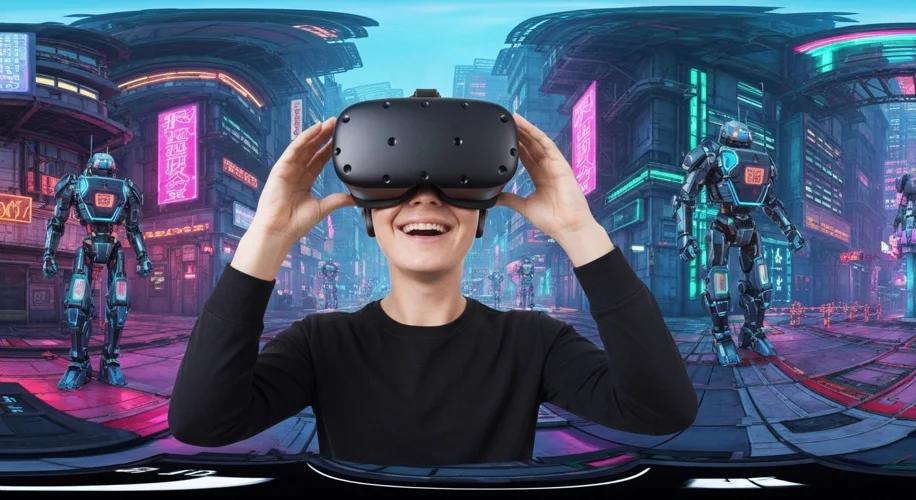Alright, let’s talk Quest 3 and PCVR. If you’ve just snagged this awesome headset and want to dive into the deeper end of virtual reality with PC-powered experiences, you’re in the right place. I’ve been messing around with VR tech for a while, and getting PCVR set up can sometimes feel like trying to assemble IKEA furniture with instructions in another language. But trust me, it’s totally doable, and the payoff is huge.
First things first: can your rig even handle it? PCVR demands a bit more juice than standalone VR, so let’s check the requirements.
Minimum PC Specs for PCVR:
- CPU: Intel Core i5-4590 / AMD Ryzen 5 1500X or greater
- GPU: NVIDIA GeForce GTX 1060 / AMD Radeon RX 480 or greater
- RAM: 8 GB RAM or more
- Video Output: DisplayPort 1.2 or newer
- USB Ports: 1x USB 3.0 port or greater
Recommended PC Specs for a Smoother Ride:
- CPU: Intel Core i5-9600K / AMD Ryzen 5 3600X or greater
- GPU: NVIDIA GeForce RTX 2070 / AMD Radeon RX 5700 XT or greater
- RAM: 16 GB RAM or more
- Video Output: DisplayPort 1.2 or newer
- USB Ports: 1x USB 3.0 port or greater
Basically, if your PC can run most modern games at decent settings, it’s probably good enough to get started. The better your GPU, the higher you can push those graphics settings for a truly immersive experience.
Connecting Your Quest 3 to Your PC:
This is where the magic happens. You’ve got a few solid options for linking your Quest 3 to your PC, each with its own vibe:
- Meta Quest Link (formerly Oculus Link): This is the official way. You’ll need a USB-C cable (the official one is great, but high-quality third-party ones work too) to connect your headset directly to your PC. It’s generally plug-and-play, offering a stable connection and good visual fidelity.
-
Steam Link: If you’re a SteamVR user, this is built right in. It allows you to stream your SteamVR games from your PC to your Quest 3 wirelessly. It’s super convenient if your PC and Quest 3 are on the same network. You just need to install the Steam Link app on your Quest.
-
Virtual Desktop: This app is a fan favorite for a reason. It’s designed specifically for wireless PCVR streaming and often provides a more robust and customizable experience than Steam Link. It’s not free, but many users find it well worth the investment for its performance and features. Again, a good Wi-Fi setup is key here.
-
ALVR: This is an open-source alternative that also focuses on wireless PCVR. It can be a bit more technical to set up than Virtual Desktop but offers a lot of flexibility and is completely free. If you like tinkering, ALVR is definitely worth exploring.
-
Air Link: This is Meta’s own wireless solution, built right into the Quest software. It’s similar to Steam Link and Virtual Desktop, aiming to provide a cable-free PCVR experience. It’s gotten much better over time and is a strong contender for wireless play.
Going Wireless: Tips for Peak Performance:
Wireless PCVR is the dream, right? No cables snagging you. But to get that smooth, lag-free experience, your Wi-Fi setup is crucial:
- Use 5GHz Wi-Fi: Seriously, this is non-negotiable. 5GHz offers much higher speeds and lower latency than 2.4GHz. Make sure your router supports it and that your Quest 3 is connected to the 5GHz band.
- Router Placement: Keep your router as close to your play space as possible. Ideally, you want a direct line of sight.
- Dedicated Network: If possible, use a dedicated Wi-Fi network for your VR headset, especially if others are using your internet heavily. This prevents other devices from hogging bandwidth.
- Wi-Fi 6/6E: If your router and PC support Wi-Fi 6 or 6E, you’ll get even better performance. These newer standards offer more capacity and efficiency.
- Wired Connection for PC: Ensure your PC is connected to the router via an Ethernet cable. This eliminates Wi-Fi as a bottleneck on the PC side.
- Adjust In-Game Settings: Even with a great setup, some demanding PCVR titles might require you to tweak graphical settings within the game or VR software for optimal performance.
Getting into PCVR with your Quest 3 opens up a universe of experiences beyond what the standalone headset can offer. It takes a little setup, but with these tips, you’ll be exploring vast virtual worlds without a cable in sight in no time. Happy diving!

